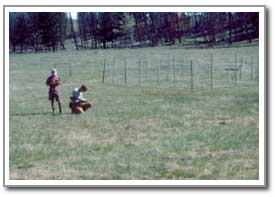Research Overview
 My general research interests are to understand the factors that determine the structure, species composition, biodiversity, and energy and nutrient metabolisms in terrestrial ecosystems. I have two main research areas.
My general research interests are to understand the factors that determine the structure, species composition, biodiversity, and energy and nutrient metabolisms in terrestrial ecosystems. I have two main research areas.
The sustainability of grazing ecosystems
My primary area of research is to understand the direct and feedback effects of native grazing mammals that foster sustainability of chronically and intensively grazed grassland. My model study system since 1988 has been grasslands of Yellowstone National Park that are grazed by large migratory herds of elk, bison, and pronghorn. Yellowstone grassland represents highly co-evolved plant-grazer-soil microbe systems. My lab investigates how important interactions among these interacting trophic levels facilitate energy and nutrient flows and control diversity and composition in Yellowstone Park grasslands.
This research includes both field and laboratory experiments. In the field, we erect ungulate exclosures to create an ungrazed grassland; then we compare plant and soil processes in grazed vs ungrazed treatments. In the lab, we focus on specific mechanisms that may drive results observed in the field. Experiments are conducted in the greenhouse or in environmental chambers to determine how mycorrhizae, nutrient availability, and soil microbial composition and diversity may mediate the effect that grazing has on plant growth.
Invasive shrub ecology
Collaborative research with Jason Fridley examines differences in aboveground and belowground resource uptake and use strategies of native and invasive shrubs in the Northeast United States. Common garden studies by members of the Fridley lab have determined that invasive shrubs have greater leaf photosynthetic rates and longer growing seasons compared to their native counterparts. Our current research focuses on the potential link between the aboveground acquisitive strategy and belowground root and mycorrhizal strategy of invasive shrubs and how the different resource uptake and use patterns of invasive shrubs may impact forest soil processes and the native forest community.
